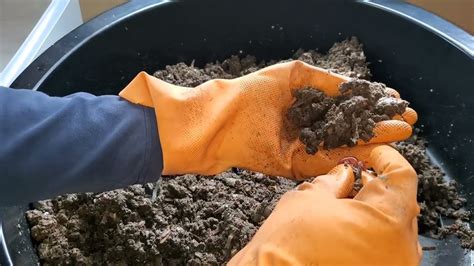How To Separate Worms From Castings
Ronan Farrow
Apr 02, 2025 · 3 min read

Table of Contents
How to Separate Worms from Castings: A Comprehensive Guide
Worms are fantastic for your garden, creating nutrient-rich castings that boost plant growth. However, sometimes you need to separate the worms from their castings, perhaps for harvesting castings, moving worms to a new bin, or simply for a cleaner worm composting system. This guide will walk you through several effective methods, catering to different needs and scales of worm composting.
Understanding the Importance of Separation
Separating worms from castings offers several key benefits:
- Harvesting high-quality castings: Worm castings are a prized fertilizer, and separating them from the worms ensures you get a pure, potent product.
- Managing worm populations: Overcrowding can hinder worm reproduction and overall health. Separation allows for better population control.
- Facilitating worm bin maintenance: Removing castings prevents the bin from becoming too full, improving aeration and reducing odor.
- Preparing for transportation: If you're moving your worms, separating them from castings makes the process much easier and less stressful for the worms.
Methods for Separating Worms from Castings
Several methods exist, ranging from simple hand-sorting to more sophisticated techniques. Choosing the right method depends on the scale of your operation and your comfort level.
1. Hand-Sorting (Best for Small-Scale Operations):
This is the most basic method, perfect for small worm bins. It involves carefully sifting through the castings by hand, picking out the worms and placing them in a new location.
- Pros: Simple, inexpensive, and requires no special equipment.
- Cons: Time-consuming, labor-intensive, and not suitable for large quantities.
2. Using a Screen or Sieve (Suitable for Medium-Scale Operations):
A screen or sieve with appropriately sized holes can efficiently separate worms from castings. The castings will pass through, while the worms (being larger) will remain on top.
- Choose the right mesh size: The holes should be large enough to allow the castings to pass through but small enough to retain the worms. Experiment to find the best size for your worm population.
- Layer the material: Place your worm-casting mixture on the sieve and gently shake or agitate to separate the materials.
- Pros: Faster than hand-sorting, less labor-intensive.
- Cons: May require multiple passes for complete separation, some smaller worms may still pass through.
3. Light Separation Technique (Effective for Various Scales):
Worms generally avoid light. This method leverages this behavior:
- Prepare a bright area: Place a bright light source (like a lamp) near your worm bin.
- Provide a dark, damp container: Place a container next to the light source offering a dark, moist environment.
- Expose castings to light: Gradually expose the castings to the light. Worms will naturally migrate to the darker container.
- Pros: Relatively fast and non-invasive for the worms.
- Cons: May not be completely effective if the worms are deeply embedded in the castings.
4. The "Harvesting Tray" Method (Ideal for Worm Farms):
This method involves a system where castings collect in a dedicated tray beneath the main worm bed. The tray can then be easily removed for harvesting.
- Pros: Continuous and efficient harvesting of castings, minimizes stress on worms.
- Cons: Requires a specifically designed worm bin with a harvesting tray.
Tips for Successful Worm Casting Separation
- Moisture Content: Maintain a slightly moist environment. This makes it easier to separate the worms from the castings without causing damage.
- Gentle Handling: Always handle your worms gently. Avoid crushing or harming them during the separation process.
- Regular Harvesting: Regular separation prevents overcrowding, improves worm health, and results in higher quality castings.
- Patience: Separation may take some time, especially with larger quantities of castings.
By implementing these strategies, you can successfully separate your worms from their castings, ensuring healthy worms and high-quality fertilizer for your garden. Remember to choose the method that best suits your needs and always prioritize the well-being of your worms.
Featured Posts
Also read the following articles
| Article Title | Date |
|---|---|
| How To Remove Eye Bags When Smiling | Apr 02, 2025 |
| How To Split Water Lilies | Apr 02, 2025 |
| How To Stop Rabbits From Eating Tulips | Apr 02, 2025 |
| How To Start Selling Feet Pictures On Only Fans | Apr 02, 2025 |
| How To Read A Surface Analysis Chart | Apr 02, 2025 |
Latest Posts
-
500 In 1978 Is How Much Today
Apr 03, 2025
-
Zo Instant Pore Refiner How To Use
Apr 03, 2025
-
Yocan Rex How To Use
Apr 03, 2025
-
Twitter How Many People Blocked Me
Apr 03, 2025
-
Traverse How Many Seats
Apr 03, 2025
Thank you for visiting our website which covers about How To Separate Worms From Castings . We hope the information provided has been useful to you. Feel free to contact us if you have any questions or need further assistance. See you next time and don't miss to bookmark.
